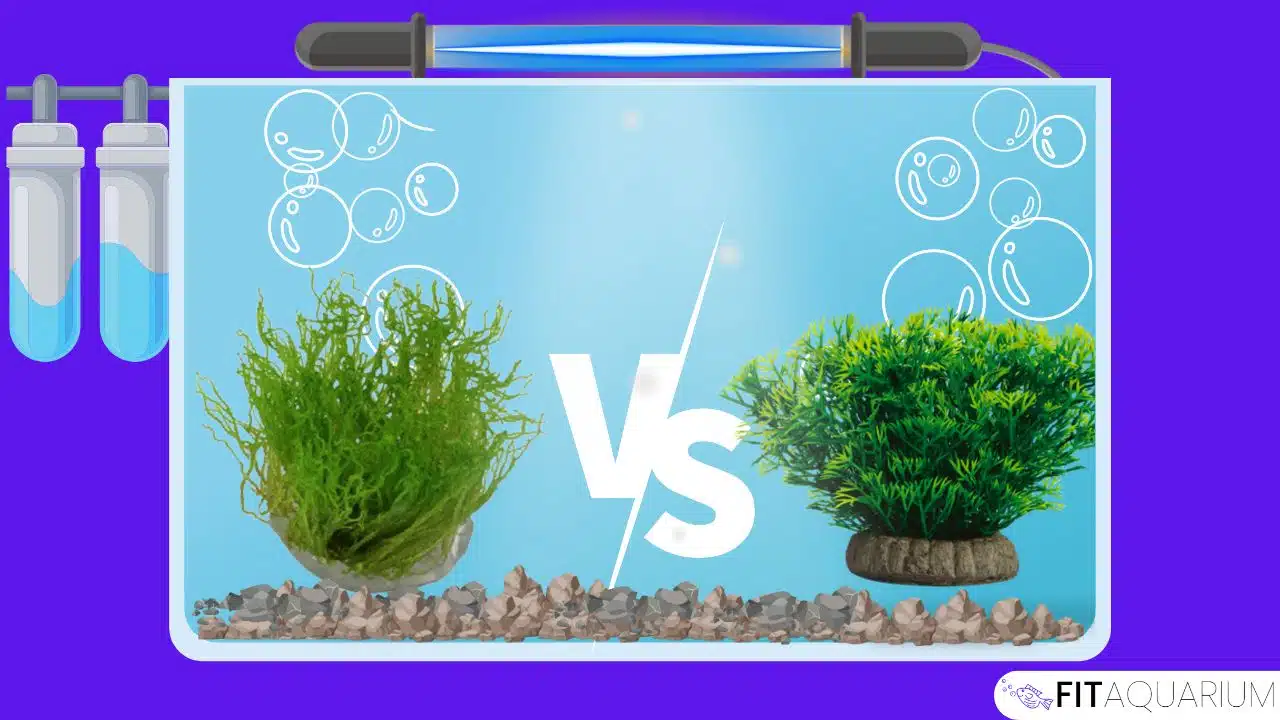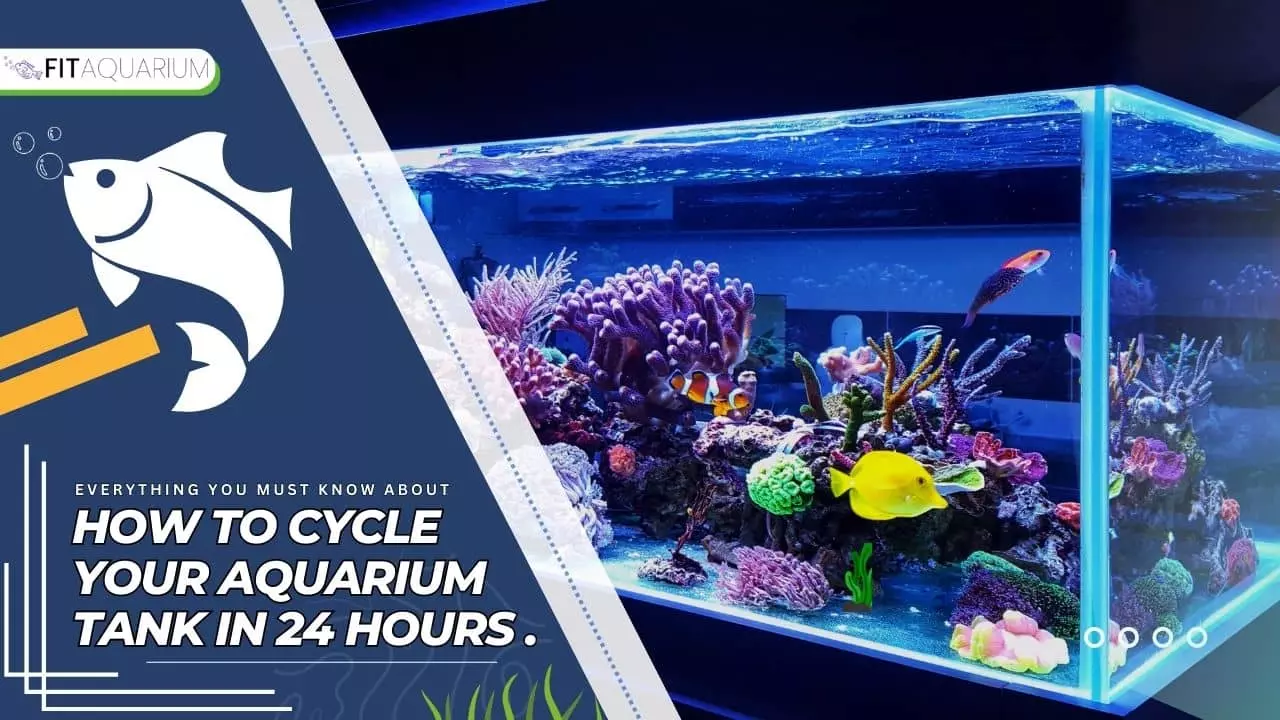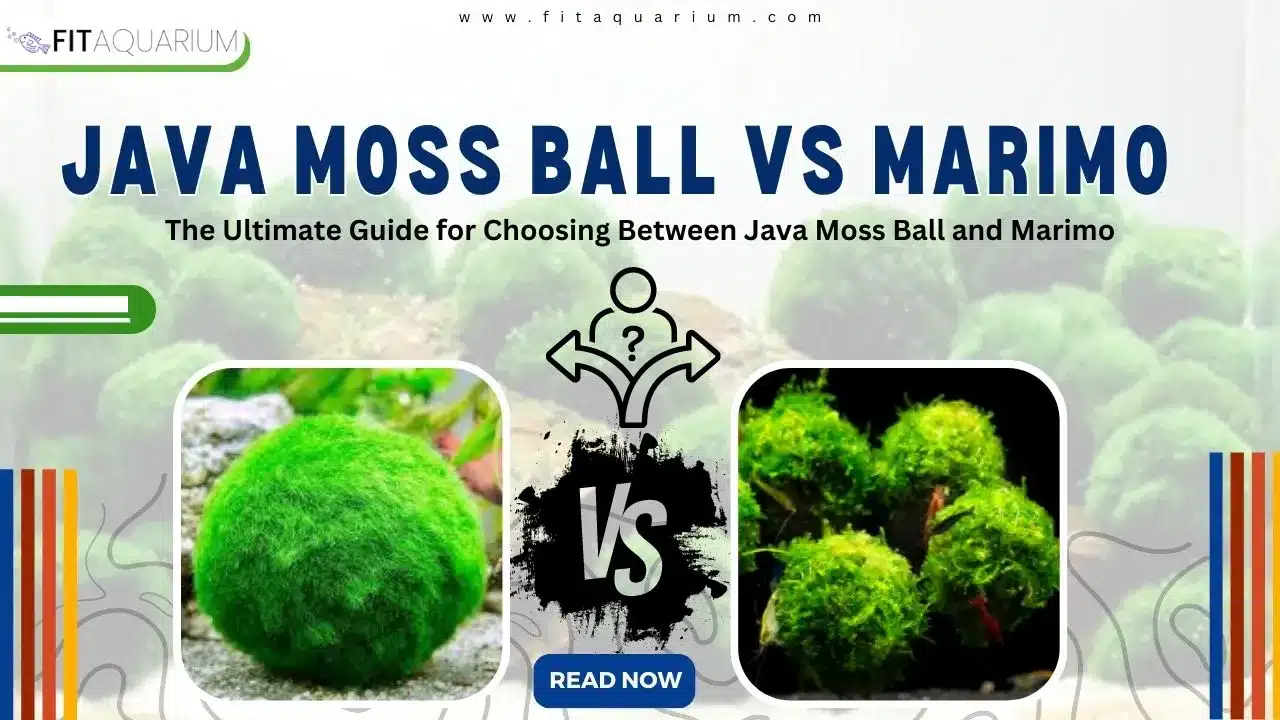Aquarium enthusiasts often use live plants to create a natural and visually appealing underwater environment. Mosses are popular choices among aquatic plant enthusiasts, as they provide excellent cover and hiding places for fish and shrimp. Among the many species of moss, Weeping Moss and Java Moss are two of the most commonly used in aquariums.
Choosing the right type of moss can have a significant impact on the overall health and appearance of your aquarium.
In this article, we will compare Weeping Moss and Java Moss, highlighting their differences in appearance, growth rate, water and lighting requirements, maintenance and care, and more, to help you choose the best moss for your aquarium.
Read Also: Flame Moss Vs Java Moss (Which One Is More Beneficial?)
Table of Contents
1. Appearance and Texture
One of the primary factors to consider when selecting a moss for your aquarium is its appearance and texture.
![Weeping Moss Vs Java Moss: A Detailed Comparison [Updated] Appearance and texture for weeaping and java moss](https://fitaquarium.com/wp-content/uploads/2023/04/Appearance-and-Texture-for-Weeaping-And-Java-Moss.webp)
Weeping Moss – appearance and texture
Weeping Moss is a delicate and graceful aquatic moss native to Southeast Asia. It has long, slender, and drooping fronds resembling weeping willow branches. The fronds are light green to yellowish-green and can grow up to 3-4 inches in length.
Weeping Moss is relatively soft and flexible, making it an excellent hiding place for small aquatic creatures like shrimp and fry. Its graceful appearance makes it a popular choice for aquascaping enthusiasts looking to create a natural and tranquil underwater environment.
Java Moss – appearance and texture
Java Moss is a popular aquatic moss native to Southeast Asia with densely packed fronds that form a green mat. It has a shaggy appearance, a coarse texture, and is ideal for providing cover and shelter to small aquatic creatures.
It is also a hardy and fast-growing plant that can quickly cover any surface in your aquarium, making it an ideal choice for aquascaping enthusiasts.
Read Also: Java Moss Care For Beginners: A Step-By-Step Complete Guide (2023)
Comparison of the appearance and texture
Appearance:
● Weeping Moss has long, slender and drooping fronds that resemble weeping willow branches, while Java Moss has tiny and densely packed fronds that form a dense mat of greenery.
● Weeping Moss is light green to yellowish-green in color, while Java Moss is a vibrant green color.
Texture:
● Weeping Moss is relatively soft and flexible, while Java Moss is rough and coarse with a firm and sturdy feel.
● Weeping Moss has delicate and feathery fronds, while Java Moss has fronds that are arranged in a tight, irregular pattern.
Overall, Weeping Moss has a more delicate and graceful appearance, while Java Moss has a denser and shaggy appearance. Weeping Moss also has a softer and more flexible texture, while Java Moss has a rougher and sturdier texture. The choice between the two will depend on personal preference and the desired look and feel of your aquarium.
2. Growth Rate and Propagation Of Weeping Moss and Java Moss
Another important factor to consider when selecting a moss for your aquarium is its growth rate and propagation.
![Weeping Moss Vs Java Moss: A Detailed Comparison [Updated] Growth rate and propagation for weeping moss vs java moss](https://fitaquarium.com/wp-content/uploads/2023/04/Growth-Rate-and-Propagation-for-Weeping-Moss-vs-Java-Moss.webp)
Weeping Moss – growth rate and propagation
Weeping Moss is a relatively slow-growing moss compared to other aquarium plants. Its growth rate can be influenced by the conditions in which it is kept, such as lighting, water quality, and CO2 levels. In a well-maintained aquarium, Weeping Moss will grow at a steady pace and can take several months to cover a large surface area.
Propagation of Weeping Moss can be done in a variety of ways. One common method is to take cuttings of the moss and attach them to a surface in the aquarium using thread or a fishing line. The moss will then grow and spread from the point of attachment. It can also be propagated by dividing the moss into smaller pieces and attaching them to different surfaces in the aquarium.
Java Moss – growth rate and propagation
Java Moss is known for its fast growth rate, and can quickly cover any surface in your aquarium. Its growth rate can be influenced by various factors such as lighting, water quality, and CO2 levels. In favorable conditions, Java Moss can grow up to 2-3 cm per month.
Propagation of Java Moss is also relatively easy. It can be propagated by taking cuttings of the moss and attaching them to a surface in the aquarium using thread or a fishing line. The moss will then grow and spread from the point of attachment. Java Moss can also propagate through fragmentation, where the moss naturally breaks apart into smaller pieces that can be spread throughout the aquarium.
Comparison of the growth rate and propagation
Growth Rate:
● Weeping Moss has a relatively slow growth rate compared to Java Moss.
● Java Moss has a fast growth rate and can quickly cover any surface in your aquarium.
Propagation for Weeping Moss vs Java Moss
● Weeping Moss can be propagated relatively easily by taking cuttings of the moss and attaching them to a surface in the aquarium. It can also be propagated by dividing the moss into smaller pieces.
● Java Moss can also be propagated easily by taking cuttings of the moss and attaching them to a surface in the aquarium. Additionally, Java Moss can propagate through fragmentation, where the moss naturally breaks apart into smaller pieces.
Overall, Java Moss has a faster growth rate and can quickly fill out your aquarium with greenery, while Weeping Moss has a slower growth rate that may require some patience from aquarists. However, both mosses are relatively easy to propagate, which makes them a good option for aquascaping enthusiasts who want to create a lush underwater environment.
3. Water and Lighting Requirements
Water and lighting requirements are crucial factors to consider when choosing aquatic plants for your aquarium. Different plant species have varying needs in terms of the water parameters and lighting conditions that they require to thrive.
Weeping Moss – water and lighting requirements
Water Requirements:
Weeping Moss can tolerate a wide range of water parameters, making it a very adaptable plant for aquariums. However, it prefers slightly acidic to neutral water with a pH range of 6.0-7.5. It also requires moderate water flow to help it receive nutrients and oxygen.
Lighting Requirements:
Weeping Moss is a low to moderate light plant, and does not require intense lighting to thrive. It can grow well in low to medium light conditions, and direct sunlight should be avoided as it can damage the delicate moss fronds.
Java Moss – water and lighting requirements
Water Requirements:
Java Moss is a very adaptable plant that can tolerate a wide range of water parameters, making it a great choice for beginners. It can thrive in both hard and soft water, with a pH range of 5.0-8.0. However, it prefers slightly acidic to neutral water with a pH range of 6.0-7.5. Java Moss also requires moderate water flow to help it receive nutrients and oxygen.
Lighting Requirements:
Java Moss is a low to moderate light plant, and can thrive in a wide range of lighting conditions. It can grow well in low to medium light conditions, but can also tolerate bright, direct lighting. However, intense lighting can cause the java moss to turn brown or yellow, so it’s important to provide it with the right amount of light.
4. Maintenance and Care
Maintenance and care are important factors to consider when choosing aquatic plants for your aquarium. Weeping Moss and Java Moss are both popular choices for aquarists due to their aesthetic appeal and ease of maintenance.
![Weeping Moss Vs Java Moss: A Detailed Comparison [Updated] Maintenance and care of weeping moss and java moss](https://fitaquarium.com/wp-content/uploads/2023/04/Maintenance-and-Care-of-Weeping-Moss-and-Java-Moss.webp)
Weeping Moss – maintenance and care
Weeping Moss is a relatively low-maintenance plant that can be grown in a variety of aquarium setups. However, it does require some basic care to ensure its health and growth.
One of the most important factors in maintaining Weeping Moss is keeping the water clean and well-aerated. This can be achieved through regular water changes and proper filtration. Weeping Moss also benefits from the addition of nutrients, such as liquid fertilizers or root tabs, to the substrate.
In terms of pruning, Weeping Moss can be trimmed with scissors or tweezers to remove any dead or discolored portions. This will promote new growth and help to maintain the plant’s shape.
Java Moss – maintenance and care
Java Moss is a hardy and low-maintenance plant that can thrive in a wide range of aquarium setups. However, it does require some basic care to ensure its health and growth.
One of the most important factors in maintaining Java Moss is providing it with clean and well-aerated water. This can be achieved through regular water changes and proper filtration. Java Moss also benefits from the addition of nutrients, such as liquid fertilizers or root tabs, to the substrate.
Java Moss is a fast-growing plant that can quickly overtake other plants or decorations in the aquarium. To prevent this, it’s important to regularly trim and prune the moss with scissors or tweezers. This will not only control its growth but also promote new growth and keep it looking neat and healthy.
5. Advantages and Disadvantages
![Weeping Moss Vs Java Moss: A Detailed Comparison [Updated] Advantages and disadvantages](https://fitaquarium.com/wp-content/uploads/2023/04/Advantages-and-Disadvantages.webp)
Advantages and disadvantages of Weeping Moss
Advantages:
- Unique Appearance: Weeping Moss has a distinct weeping growth pattern that adds an interesting and unique look to aquariums.
- Ideal for Aquascaping: The flexible and pliable branches of Weeping Moss make it an excellent choice for aquascaping, as it can be easily attached to driftwood, rocks, or other aquarium decorations.
- Low Light Requirements: Weeping Moss can thrive in low to moderate light conditions, making it an ideal choice for aquariums with low lighting or for hobbyists who do not want to invest in high-powered lighting systems.
- Low Maintenance: Weeping Moss is a hardy plant that requires minimal maintenance once established, making it an easy addition to any aquarium setup.
Disadvantages:
- Slow Growth Rate: Weeping Moss has a slow growth rate compared to other aquatic plants, which can make it difficult to achieve a dense moss carpet or achieve full coverage of aquarium decorations.
- Prone to Algae Growth: Weeping Moss is susceptible to algae growth, which can be difficult to control and may require regular maintenance and cleaning.
- Requires Clean Water: Weeping Moss requires clean and well-aerated water to thrive, which can be a challenge in some aquarium setups that have poor filtration or high levels of waste.
Advantages and disadvantages of Java Moss
Advantages:
- Versatile: Java Moss is a versatile plant that can be used in a variety of ways, such as attaching it to rocks, driftwood, or other aquarium decorations to create a natural and aesthetic look.
- Fast Growth Rate: Java Moss has a fast growth rate, making it ideal for quickly covering aquarium decorations or creating a dense carpet of moss.
- Low Light Requirements: Java Moss can thrive in low to moderate light conditions, making it an ideal choice for aquariums with low lighting or for hobbyists who do not want to invest in high-powered lighting systems.
- Easy Maintenance: Java Moss is a hardy plant that requires minimal maintenance once established, making it an easy addition to any aquarium setup.
Read Also: 15 Java Moss Benefits [Along With Precautions To Consider]
Disadvantages:
- Prone to Algae Growth: Java Moss is susceptible to algae growth, which can be difficult to control and require regular maintenance and cleaning.
- Can Overgrow: Java Moss can grow rapidly and may overgrow other aquarium plants if not trimmed regularly.
- Requires Clean Water: Java Moss requires clean and well-aerated water to thrive, which can be a challenge in some aquarium setups with poor filtration or high levels of waste.
Choosing the Best One From Weeping Moss vs Java Moss
When choosing between Weeping Moss and Java Moss for your aquarium, consider their appearance, growth rate, water and lighting requirements, and maintenance needs. Weeping Moss has a droopy appearance and prefers cooler water and lower light, while Java Moss grows quickly and can thrive in various conditions. Weeping Moss requires less maintenance, while Java Moss may need more frequent trimming.
Read Also: Christmas Moss Vs Java Moss [Choosing The Best One]
Conclusion:
In conclusion, choosing between Weeping Moss and Java Moss for your aquarium depends on several factors, including appearance, growth rate, water and lighting requirements, and maintenance. Weeping Moss has a distinctive droopy appearance and prefers lower light and cooler water temperatures, while Java Moss has a stringy and bushy appearance and can thrive in a wide range of conditions.
When deciding which moss to use, consider the specific needs of your tank and your personal preferences. If you want a fast-growing moss that can quickly spread across surfaces, Java Moss may be the better choice. However, if you prefer a slower-growing moss that requires less maintenance, Weeping Moss may be the way to go. Ultimately, both mosses have their own advantages and disadvantages, so it’s important to weigh these factors carefully before making a decision.
Frequently Asked Question
Here are some of the burning questions about the topic Weeping Moss vs Java Moss.
-
Does weeping moss need cO2?
Weeping moss does not necessarily needs CO2 for growth because it may survive just fine without it. However, injecting a small amount of CO2 may promote your weeping moss’ growth.
-
Can Weeping Moss Grow Out of Water?
Weeping Moss, like Flame Moss, is an aquatic or semi-aquatic moss. This implies that it can only develop if it is entirely or partially submerged in water. Although it may endure small periods of time outside of water, you should not attempt to grow it outside of water.

![Weeping Moss Vs Java Moss: A Detailed Comparison [Updated] Weeping moss vs java moss](https://fitaquarium.com/wp-content/uploads/2023/04/Weeping-Moss-vs-Java-Moss.webp)



